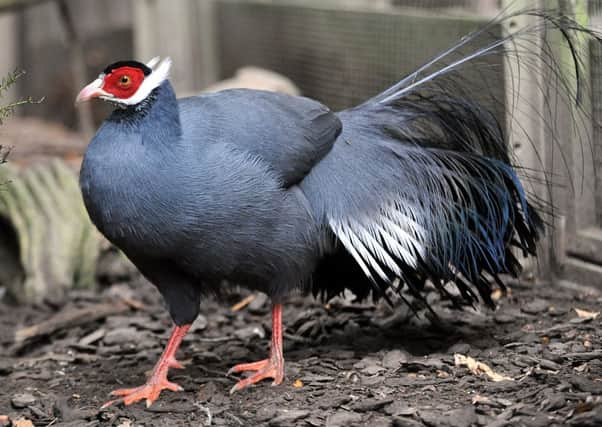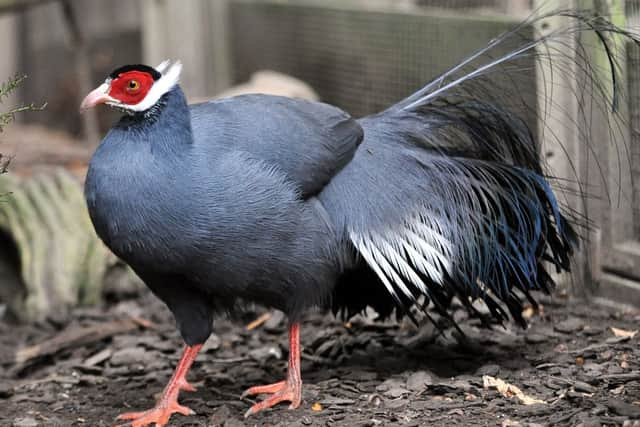Pheasants winged their way from China


This week we take a look at a bold bird from China – the blue eared pheasant.
Blue eared pheasant
(Crossoptilon auritum)


The heights of China
Blue eared pheasants inhabit the high altitude forests of China and can even be seen feeding around monasteries in some parts of the country.
Advertisement
Hide AdAdvertisement
Hide AdDuring the winter these birds live in large flocks for warmth and safety, but come spring time they will head off in pairs to set up their own breeding territories.
The Tilgate flock share an aviary with red-billed blue magpies and the red squirrels.
‘Eared’ family
There are four types of eared pheasants – the blue eared pheasant, brown eared pheasant, white eared pheasant and Tibetan eared pheasant. You can see all of these, apart from the Tibetan eared pheasant, at Tilgate Nature Centre.
The birds earn their name from the distinctive white feathers on the sides of their heads. The blue eared pheasant is a dark grey/blue colour with a red face and white ‘ears’.
Advertisement
Hide AdAdvertisement
Hide AdHappily there are still many blue eared pheasants living in the wild. However, due to hunting and habitat loss, the other members of the eared family are decreasing.
Tasty treats
They may not be particularly big but these birds have powerful beaks which they put to good use digging for insects, bulbs and seeds. We feed our birds a mixture of wheat, special pellets, fruit, vegetables and insects.
As a treat, our blue eared pheasants also enjoy peanuts and raisins.
While many pheasants are naturally nervous creatures this species is particularly bold and ours will happily eat from our hands!
Travelling chicks
Advertisement
Hide AdAdvertisement
Hide AdMales and females of many species of bird can be told apart by their different plumages; blue eared pheasants’ sex can be determined by size and spurs – males are larger and have spurs on their legs.
The birds lay up to 12 eggs in a clutch which hatch after about a month. Both parents play a part in rearing chicks, although they are able to run around and feed themselves as soon as they hatch.
We have previously sent blue eared pheasants reared at the nature centre to Beale Park and the Berkshire College of Agriculture to form new pairs.
Come and visit us or go to www.tilgatenaturecentre.co.uk to find out more about Tilgate Nature Centre and its residents.